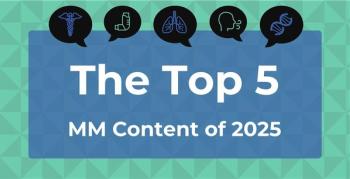
Patients With Chronic Liver Diseases Have High Risk of More Severe COVID-19 Outcomes
Patients with chronic liver diseases have been at a high risk of more severe COVID-19 outcomes, but the pandemic has meant the management of these diseases has received less attention.
Patients with nonalcoholic fatty liver disease (NALFD) or nonalcoholic steatohepatitis (NASH) are at risk for having a more severe COVID-19 outcome and patients with cirrhosis have a high mortality rate; however, the pandemic has resulted in less attention on liver transplantation programs and management of advanced liver disease, according to a study
The authors sought to understand the impact of COVID-19 on the management, course, and outcome of chronic liver diseases (CLD). They conducted a review of studies on PubMed.
Hepatitis
During the pandemic, organizations that contribute to national hepatitis elimination programs had services affected resulting in some screening programs and community-based education being halted. Testing facilities closed and even when they stayed open, people avoided visiting facilities to avoid COVID-19 infection. Finally, continuing treatment was challenging during the pandemic as travel restrictions made it difficult for patients in rural areas to access their medication.
Hepatitis B and C can result in CLD, and the World Health Organization has a target to eliminate hepatitis by 2030 with a 90% reduction in new infections and a 65% reduction in liver-related deaths. However, the delays from the pandemic could mean missing those targets, the authors noted.
One study found that additional cases of advanced liver disease and deaths related to hepatitis C increased as the length of delay did. Another study on outpatient clinical visits found decreasing trends of clinic visits, indicating potentially “inadequate HCC [hepatocellular carcinoma] surveillance in patients with chronic hepatitis, prone to developing HCC.”
Advanced CLD
A survey of Italian doctors managing cirrhosis and its complications found a reduction in outpatient activity. “A 30% reduction in pre-transplant assessment and 44% deferral in post-transplant reviews were reported by Liver Transplant Centers,” the authors explained.
Liver transplantation was affected during the pandemic as the burden on intensive care facilities led some centers to cease routine liver transplantation activities while many centers were constrained because of a variety of factors, including low rates of deceased donation, limited resources, a lack of available beds, and a shortage of specialists.
“High waiting-list mortality is expected as one of the consequences of all the above,” they wrote.
A French study found that delays in care meant patients with HCC started presenting with larger tumor burden. In addition, care was delayed for patients with known HCC. In 2019, therapeutic intervention was delayed for 4.7% of patients with HCC compared with 23.3% of patients in 2020.
NAFLD/NASH
NASH had the strongest association with COVID-19 of all comorbid metabolic conditions, including hypertension and obesity. A Chinese study found NAFLD was one factor associated with a more severe course of COVID-19, and a second Chinese study found the risk of severe COVID-19 was higher in patients younger than 60 years.
However, patients with alcoholic liver disease seem to be affected even more.
“This population is at high risk for severe COVID‐19 infection, given their impaired immune system, neglected general health with multiple comorbidities, social isolation resulting in psychological disturbances, increased drinking or relapse during lockdown, and difficulty asking for assistance and supportive care,” the authors wrote.
Liver Cirrhosis
Patients with liver cirrhosis had a high risk of liver function and deterioration if infected with COVID-19. An Italian study found that infection with COVID-19 increased the proportion of patients with a Model for End-stage Liver Disease (MELD) score of 15 or greater and the death rate was higher for patients with high MELD scores.
A study of 21 countries found that the mortality rate from COVID-19 for patients with cirrhosis was 39.8% compared with 12.2% for patients with CLD without cirrhosis. In addition, higher Child-Pugh score and MELD score were both associated with higher mortality rates.
“The severe crisis generated by the overwhelmed healthcare systems has diverted the attention of healthcare professionals from viral hepatitis elimination and liver transplantation programs, HCC surveillance and management of advanced liver disease, to COVID-19 care,” the authors concluded.
Reference
Mani I, Alexopoulou A. Recent challenges facing patients with preexisting chronic liver disease in the era of the COVID-19 pandemic. Ann Gastroenterol. 2021;34(5):625-633. doi:10.20524/aog.2021.0628
Newsletter
Stay ahead of policy, cost, and value—subscribe to AJMC for expert insights at the intersection of clinical care and health economics.








